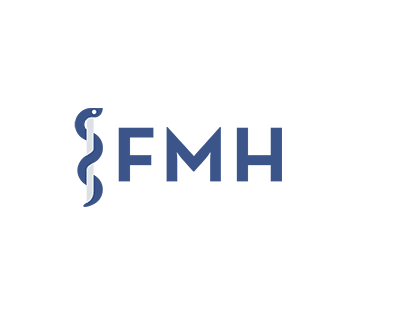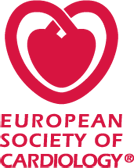Disease Patterns
Hypertension, High Blood Pressure
High blood pressure usually goes unnoticed at first, but in the long run it puts a strain on the blood vessels and the heart in particular. A sudden sharp rise in blood pressure can lead to headaches, dizziness, impaired vision, dizziness and in more extreme situations to neurological crises or heart failure. Treatment is important to prevent long-term damage such as heart attack and stroke, or deterioration of organ functions. Adequate control of blood pressure is one of the main focus points of good preventional medicine. Especially in case of additional risk factors (including smoking, high fat levels or diabetes), blood pressure must be reduced to values below 140/90 mmHg. In addition to blood pressure measurements in the practice, in pharmacies or at home, 24-hour long-term measurement has become a well-established method for diagnosing high blood pressure requiring treatment or monitoring the success of treatment. In patients with known elevated blood pressure, regular monitoring of the heart and kidney function as well eye health, are of high importance. For the treatment of high blood pressure, a healthy life style with regular sport, low-salt diet, weight loss in case of obesity and cessation of smoking often avoid the use of medication. However, to avoid long-term damage in persistant elevated blood pressure, medication is necessary. In some cases, especially in young persons or persistant high blood pressure despite appropriate therapy, triggering causes must be evaluated.
Heart failure
Heart failure is the lack of ability of the heart to pump enough blood through the body. It is caused by a variety of different diseases and/or conditions. For successful treatment it is therefore crucial to make a correct and early diagnosis. The drug therapy for heart failure is complex and varies from person to person. For some patients, the implantation of a pacemaker can be a sensible option. In cases of severe heart failure, the implantation of a defibrillator (ICD) must be considered, since the risk of sudden cardiac death increases with the severity of the disease. The multitude of diagnostic and therapeutic options in the treatment of heart failure often makes treatment by a specialist (cardiologist) necessary. Due to our many years of experience in dealing with all necessary and useful procedures, we are able to offer you competent care in the field of heart failure.
Myocarditis
Myocarditis is the inflammation of the heart's muscle cells. Often, this occurs as a side-reaction during or after a viral infection (gastrointestinal tract, flu/influenza, COVID-19). In such cases, myocarditis is often mild and resolves by itself without the need for stronger medications. Rarely, our own body can attack the heart's muscle (autoimmune myocarditis), which requires specialised evaluation, immunosuppressant medication. The symptoms are sometimes unspecific (cardiac arrhythmia, heart complaints, weakness, shortness of breath) and can often mimic a heart attack. Myocarditis can also occur weeks after the original infection has healed. It can be identified through clinical and diagnostic evaluation (ECG, echocardiography), however, for more definitive diagnosis, an MRI of the heart or in more serious cases tissue biopsy is required.
Pericarditis
Similar to myocarditis, pericarditis is an inflammation of the heart. However, rather than affecting the muscle cells, it involves the pericardium, a fine sac-like structure that surrounds the heart. It leads to discomfort or pain in the chest, which is often aggreviated by laying flat or deep inpiration. It can lead to build up of fluid in the pericardial space, between the pericardium and the actual heart. In more extreme cases, just as myocarditis, it can mimic a heart attack. It can be diagnosed through cardiological assessment (detailed patient history and physical examination, ECG, echocardiography). In some cases, cardiac catheterization to exclude an actual heart attack may be necessary. Just as myocarditis, pericarditis often occurs during or after a viral infection (gastrointestinal tract, flu/influenza, COVID-19), or sometimes as part of a more generalised autoimmune condition, such as Lupus or rheumatoid disease. The combined presentation of pericarditis and myocarditis is often observed. Thankfully, isolated pericarditis is usually quick-resolving and easily treated by antiinflammatory drugs. Reoccuring or 'incessant' pericaritis is rare and can require interdisciplinary collaboration, to find the cause and appropriate therapy.
Coronary Heart Disease
The coronary vessels supply the heart muscle with blood. They originate directly from the aorta and surround surround the heart, their structure resembling the root system of a tree. Coronary heart disease is the narrowing of the vessel cross-section due to calcification deposits. This slow process develops slowly over the course of many years, it can however be accelerated by negative factors (smoking, diabetes, genetic predisposition, high blood lipid levels, high blood pressure = cardiovascular risk factors). This process can be slowed down or even brought to a complete standstill by medication and lifestyle changes (diet, exercise). Coronary heart disease can be diagnosed in radiological examinations (CT, PET-CT) or in heart catheterization.
Angina Pectoris
Angina pectoris means "tightness in the chest", and is often associated with complaints in the left arm, with sensations in the neck region or with dull complaints in the pit of the stomach. Angina pectoris is the cardinal symptom of narrowing of the coronary vessels (coronary heart disease) and therefore requires very careful cardiological evaluation (stress ECG, echocardiography, stress echocardiography, perfusion imaging or left heart catheterization), because timely treatment of narrowing of the coronary vessels can prevent a heart attack and improve quality of life. Problems of other neighboring organs (stomach, lungs, oesophagus, bones and muscles of the chest) can sometimes mimic cardiac symptoms, therefore careful history taking and differential diagnosis, especially after exclusion of a coronary heart disease, is important.
Heart Attack (myocardial infarction)
When a coronary artery is suddenly obstructed through a calcification, a part of the heart muscle is missing oxygen supply and begins to choke. A heart attack (myocardial infarction), a life-threatening emergency, develops. A drop in cardiac output and, especially if left untreated, cardiac arrhythmia are the result. Survival and optimal prognosis depends, among other things, on how fast the diagnosis is established and the heart attack is treated. Treatment of a blocked coronary artery is done by emergency and immediate cardiac catheterization, the vascular occlusion can often be resolved and the blood supply to the heart muscle is restored. Therefore, any suspicion of a heart attack requires immediate reaction and emergency transport to a hospital with a cardiac catheter laboratory in order to limit the damage to the heart as far as possible. "Time is muscle".
Valvular Diseases
The heart valves regulate the blood flow within the heart. They establish appropriate forward flow of blood and prevent the blood from running backwards. Constriction (stenosis) or leakage (regurgitation) lead to an impairment of the heart's function, even if the heart muscle is often otherwise healthy. The ultrasound examination of the heart (echocardiography) is the most important method for assessing the heart valves. One speaks of a heart valve stenosis when the elastic parts of the valve (leaflets) become increasingly calcified and are no longer able to open sufficiently wide. This hinders the blood flow and can lead to symptoms of heart failure if they are more severely constricted. Leakages (regurgitation) of heart valves can also cause heart failure, because part of the blood that is meant to be forwarded through the pumping action of the heart muscle instead ends up flowing backward into the previous chamber. In the case of minor valve defects, an observative strategy without intervention, or a supportive therapy by medication is usually often appropriate; for more severe valve disease, specialised procedures or heart surgery are often necessary.
Endocarditis
The inflammation of a heart valve due to bacterial or more rarely fungal infection is always a serious and often life-threatening disease, as the infection threatens to destroy the heart valve or even attack the muscle of the heart. Early signs are a deterioration of the general condition, unclear bouts of fever and embolisms. The diagnosis can be made by means of an ultrasound examination of the heart (echocardiography through the oesoghagus); treatment usually requires an inpatient stay in hospital, intravenous antibiotic or antifungal treatment, and in some cases heart surgery.



